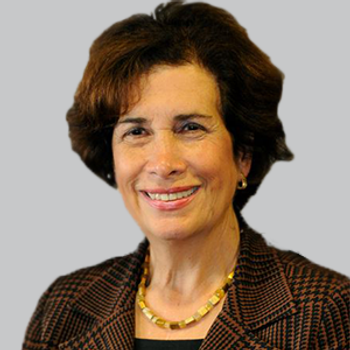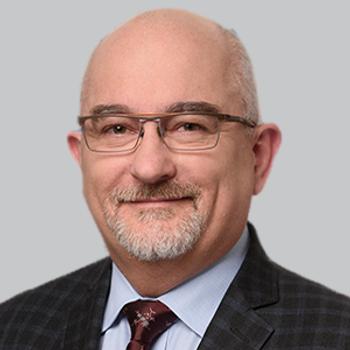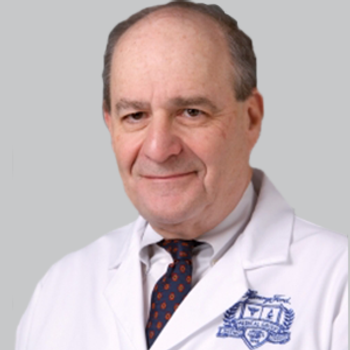
The clinical assistant professor of neurology and neurosurgery at the University of Texas spoke about the staggering number of men who forgo seeing physicians for serious conditions and how the clinical community can help address the challenge.

Matt Hoffman, Editorial Director for NeurologyLive, has covered medical news for MJH Life Sciences, NeurologyLive’s parent company, since 2017. He executive produces the NeurologyLive Mind Moments® podcast, and hosted the Medical World News show Deep Dive. Follow him on Twitter @byMattHoffman or email him at [email protected]

The clinical assistant professor of neurology and neurosurgery at the University of Texas spoke about the staggering number of men who forgo seeing physicians for serious conditions and how the clinical community can help address the challenge.

A trio of predictors may help inform which patients may be candidates for resective surgery, as well as improve the postsurgical consideration for re-operation on those who experience disabling seizure recurrence.

Data suggest that rufinamide is capable of aiding in the control and reduction of seizures, as well as the possible achievement of seizure-freedom in pediatric patients with genetic/metabolic, hypoxic-ischemic, structural, and other intractable epilepsies.

Several poster presentations at IEC 2019 suggest that the incidence of comorbid sleep disorders in people with epilepsy is higher than estimated and have a detrimental impact on quality of life and social adjustment.

Patients with CLN2 disease have shown a maintained treatment benefit, high rate of response, and lowering rates of seizure occurrence over 3 years in an ongoing extension trial.

The GW Pharmaceuticals cannabidiol formulation, marketed as Epidiolex, did not show any evidence of clinically relevant drug-drug interactions when co-administered in patients with epilepsy.

Overall, myoclonic and absence seizures worsened in 1.2% and 15.9% more patients in the placebo group, respectively, than those given perampanel. The reductions in seizure frequency and the increases in seizure-free days were also greater with the noncompetitive AMPA receptor antagonist.

An assessment of 230 poststroke patients determined that neurorehabilitation outcomes and length of stay did not differ between those with poststroke epileptic seizures and those without.

In a retrospective study, 51.7% of patients achieved seizure freedom while receiving lacosamide, with seizure freedom rates going as high 88.9% for those who were administered the drug as monotherapy.

Findings from SANAD II have suggested that levetiracetam is inferior to valproate in time to 12-month and 24-month remission in patients with generalized or unclassified epilepsy.

While the clinical benefit of the therapy in Alzheimer is still unclear, the dihydropyridine calcium channel blocker increased blood flow by 20% compared to placebo in the brain’s memory and learning center, indicative of preserved cerebral autoregulation.

Despite the clinical benefit being limited, the slowing of pantothenate kinase-associated neurodegeneration disease progression—particularly in atypical cases—is a step toward developing a treatment for the orphan disease.

During the average follow-up period of 3 years, 70.7% of those in the pediatric-onset MS group met the clinical definition for cognitive impairment compared with 59.8% of those in the adult-onset group.

The systematic review and meta-analysis identified cNfL usefulness as a biomarker, with the potential to help differentiate between frontotemporal dementia and Alzheimer disease, as well as Parkinson disease from atypical parkinsonian syndromes.

Patients with multiple sclerosis who were obese had higher EDSS scores and higher levels of inflammatory IL-6 and leptin in the CSF prior to treatment, as well as lower levels of anti-inflammatory IL-13.

Axovant reported positive safety data as well as improvements in a number of measurements of motor function and dyskinesias in patients with Parkinson disease who received treatment with their investigational gene therapy.

Almost 25% more of the patients with focal drug-resistant epilepsy who successfully underwent cortical stimulation to induce electroclinical seizures experienced good outcomes versus poor, suggesting the method’s ability to identify the epileptic generator as reliably as spontaneous seizures.

All told, every patient with RLS in the study had SIBO present, in comparison to general population rates which range from roughly 6% to greater than 15%.

Investigators noted that, when considered with efficacy findings in narcolepsy, pitolisant has a favorable risk-benefit profile representative of advancement in the treatment of excessive daytime sleepiness and cataplexy in adult patients.

The investigational dual-orexin antagonist from Eisai was significantly better at reducing Insomnia Severity Index-measured symptom severity in more than 1000 adults with insomnia in 2 phase 3 studies.

The Task Force sought to improve the employment of MRI’s capabilities in the treatment of epilepsy, which the authors noted “are variable worldwide and may not harness the full potential of recent technological advances for the benefit of people with epilepsy.”

The efficacy of CBT using the American Academy of Sleep Medicine (AASM) SleepTM platform has been shown to be similarly efficacious to face-to-face physician encounters in 30 adults with chronic insomnia.

The highly specific myostatin activation inhibitor is expected to enter phase 2 study in spinal muscular atrophy, according to SRK-015’s manufacturer, Scholar Rock.

Zilucoplan, also being developed for generalized myasthenia gravis, is expected to enter into a phase 2 clinical trial in IMNM in the second half of 2019, according to Ra Pharma.

New case-control findings suggest that glutamate and glutamine content may play a crucial role in the pathophysiology of functional motor symptoms.

Galcanezumab, an anti-CGRP antibody, is now the first approved therapy for the treatment of episodic cluster headache just 9 months after receiving approval for the preventive treatment of migraine.

The FDA designation was granted to the SK channel modulator after it showed promise in preclinical and phase 1 studies. Cadent Therapeutics is planning a phase 2a trial for the latter half of 2019.

The findings from an analysis of more than 2000 plasma samples suggest that levels of low-density lipoprotein cholesterol, independent of APOE, are associated with early-onset Alzheimer disease—and that the APOB gene may play a role.

Patients with favorable prognostic profiles or relapsing-remitting MS are the least likely to initiate high-efficacy disease-modifying therapies recommended by their physician, with many patients citing access challenges.

Results of a pooled analysis of 3 clinical trials suggest that the magnitude of fingolimod’s treatment effect in MS is not affected by the presence of migraine or headache in patients.